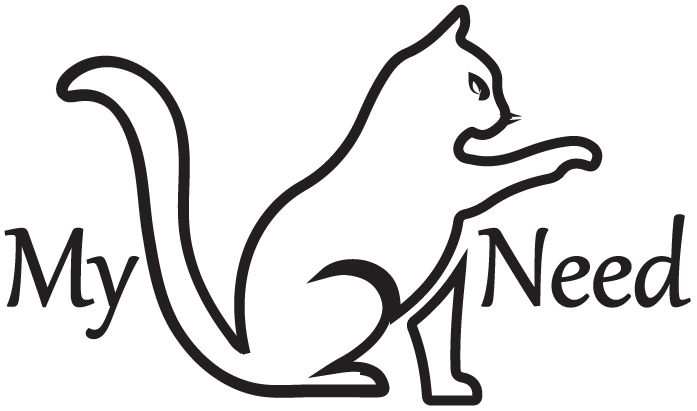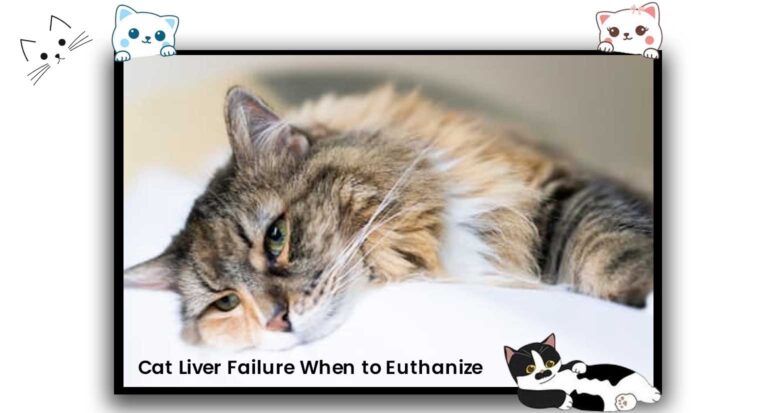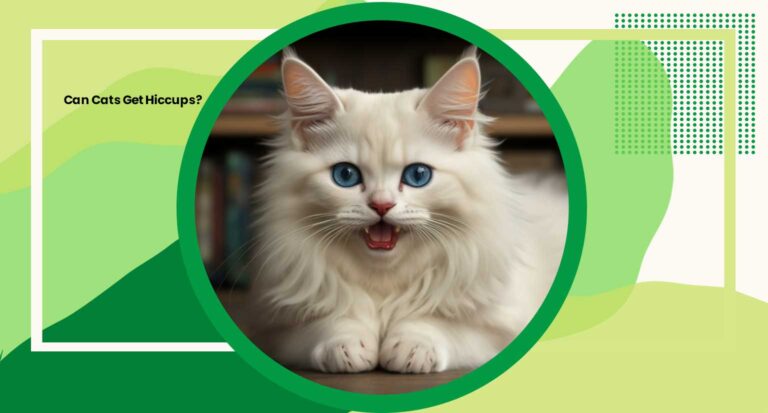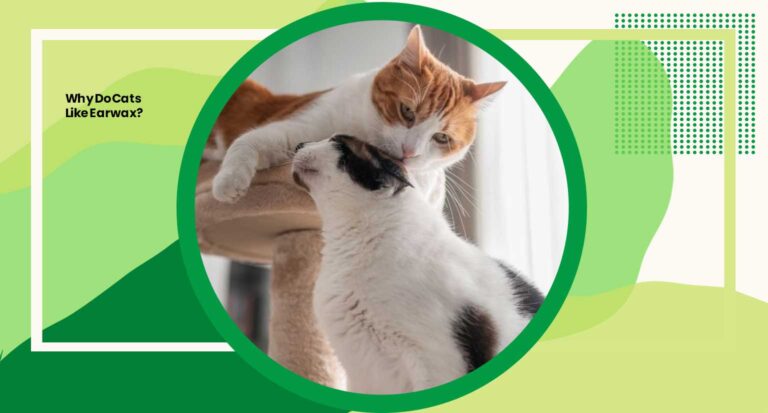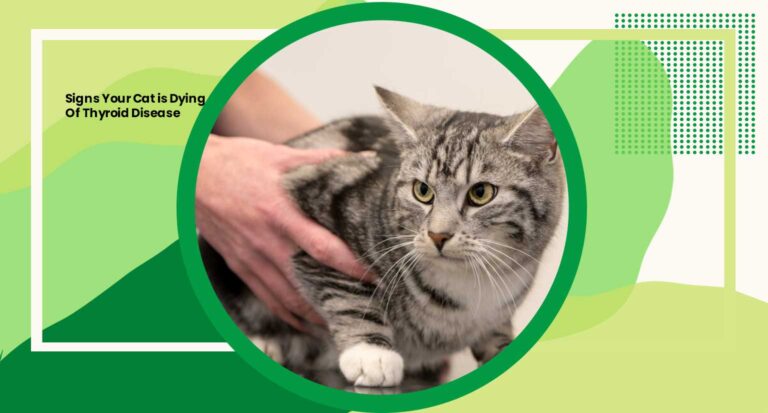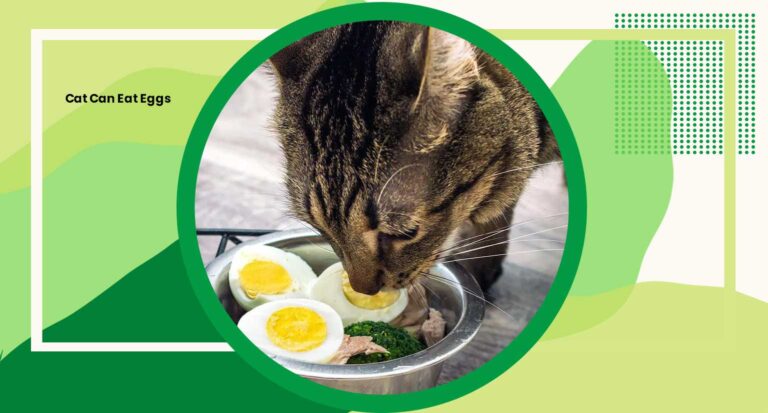Bland Diet for Cats
When your feline friend starts showing signs of an upset stomach or experiences a sudden change in their stool, it’s essential to take swift action. The answer might just lie in a bland diet for cats, a simple yet effective solution to soothing an upset tummy and promoting a healthy digestive tract. A bland meal can provide the small pieces of easily digestible foods that your pet’s gastrointestinal tract needs to recover.
Whether you’re dealing with food allergies, inflammatory bowel disease, chronic diarrhea, or another medical condition, offering a bland diet can be a better choice for your pet. It’s important to note that a switch to such a diet should be undertaken with care to ensure your cat’s health isn’t adversely affected by a sudden food change. Always remember that while some regular food might be safe, it’s crucial to consult with a board certified veterinary nutritionist to craft a meal plan that will meet your cat’s specific needs.
From sweet potato and chicken broth to white rice and cottage cheese, there’s a variety of ingredients that you can include in your cat’s diet to help their upset stomach. In some cases, a bland diet might also involve supplementing with vitamin B, zinc sulfate, and other essential nutrients. But what exactly is a bland diet for cats? How can you gradually introduce it to your pet’s diet? Let’s delve into the world of bland food for cats and discover how it can contribute to a healthier gastrointestinal system for your beloved pet.
Understanding a Bland Diet For Cats
A bland diet for cats is primarily composed of small meals of easily digestible foods that won’t upset the digestive system. It typically includes a single protein source, like much chicken or turkey baby food, mixed with plain ingredients such as white rice or sweet potato. Such a diet can be introduced for a period of time to help soothe your pet’s upset stomach, normalize stools, and reduce the risk of further gastrointestinal upset.
This type of diet acts as a gentle yet effective remedy for your cat’s digestive issues. It’s made up of straightforward, familiar ingredients that you can usually find in your pantry, with the addition of a few specific supplements. The focus is on ensuring that the meal is high in essential nutrients but low in fats, with ingredients like chicken broth replacing fatty foods for a healthy, balanced diet.
Supplements such as zinc sulfate, vitamin E, copper sulfate, ferrous sulfate, and folic acid can be added in appropriate amounts to ensure the cat’s diet remains balanced and nutritionally complete. Other ingredients like dried chicory root, hydrolyzed yeast, and yucca schidigera extract are also often included for their beneficial effects on the digestive system.
The goal is to provide food that’s simple for your cat’s digestive tract to break down, allowing for better absorption of nutrients, alleviating stress on the GI tract, and promoting overall cat’s health. While transitioning to this diet, remember to offer small amounts of water throughout the day to keep your pet hydrated.
It’s always important, however, to consult with a professional before making any significant changes to your cat’s diet. Dietary needs can vary based on age, size, health, and other factors, and only a trained professional can provide the most accurate advice for your pet’s unique situation.
Criteria for Bland Diet Ingredients
When selecting ingredients for a bland diet for cats, it’s crucial to focus on elements that are easy to digest, rich in nutrients, and mild enough not to trigger further gastrointestinal issues. Below are some key criteria to keep in mind.
Protein Sources
The diet should include a single protein source that’s cooked and served in small pieces. This could be chicken, turkey, or even a specialized pet food with a single protein. It’s recommended to avoid fatty acids or skin, as these can exacerbate digestive issues.
Carbohydrates
Carbohydrates provide energy and help to bind the food together, aiding in the formation of normal stools. Foods like white rice and sweet potato are ideal. They’re easily digestible and unlikely to upset your cat’s stomach.
Fiber
A small amount of fiber can assist in the movement of food through the digestive tract and contribute to healthier stools. Ingredients such as pumpkin or small amounts of a bland diet supplemented with dried chicory root or slippery elm can serve this purpose.
Essential Nutrients
Even with a bland diet, your cat still requires a range of essential nutrients. Supplements like zinc sulfate, copper sulfate, manganese sulfate, potassium iodide, pyridoxine hydrochloride (Vitamin B6), and calcium pantothenate (Vitamin B5) should be included as directed by a veterinary nutritionist.
It’s important to remember that a bland diet is not intended for long term use. It is a short-term solution to provide relief for your cat’s digestive tract during periods of upset. Always seek the advice of a professional before implementing a new diet plan for your cat. And when ready to transition back to regular food, do so gradually to prevent any further upset.
Bland Wet and Dry Food
There’s a common misconception that a bland diet for cats is synonymous with home-cooked meals. While cooking for your pet allows you to control the ingredients, commercial pet food producers have leveraged ingredient technologies to create balanced and nutritious bland diets that are just as effective.
Bland Wet Food
Wet food can be an excellent option for introducing a bland diet to your cat. Wet food’s high moisture content supports hydration, which is particularly beneficial if your cat is experiencing upset stomach or loose stools. Several commercial brands offer bland diet options in wet food form, often featuring a single protein source like chicken or turkey, and other beneficial supplements such as zinc proteinate, copper proteinate, and manganese proteinate. When shopping for wet food, look for options that include natural ingredients and avoid those with tomato paste or other ingredients that might be hard for your cat to digest.
Bland Dry Food
Alternatively, there are dry food options designed to be gentle on your cat’s gastrointestinal tract. Dry food might be a better choice for some cats, especially those who are used to dry kibbles. Many commercial bland diets are supplemented with ingredients like vitamin D, vitamin E, folic acid, and essential fatty acids. Similar to wet food, these products often contain hydrolyzed yeast, dried chicory root, and yucca schidigera extract, which can offer additional support for your cat’s digestive system.
Before opting for commercial bland diet options, remember to check for any potential food allergies your cat might have. And as always, seek advice from a veterinary nutritionist to ensure the selected diet is suitable for your cat’s specific needs and medical condition.
Significance of Balanced Bland Food for Cats
A balanced bland diet for cats plays a critical role in managing gastrointestinal issues. Whether your cat is dealing with chronic diarrhea, upset stomach, or a sensitive digestive tract, introducing a bland diet can provide much-needed relief. Here’s why a balanced bland food diet is vital for your cat’s health:
Easy Digestion
The ingredients in a bland diet are specifically chosen for their easy digestibility. Small pieces of chicken or turkey, white rice, and sweet potato, among others, are less likely to upset your cat’s stomach and are easier on the digestive system. This allows the digestive tract some time to recover and heal.
Nutritional Value
A bland diet doesn’t mean a nutrient-deficient diet. Even with limited ingredients, it’s possible to provide your cat with all the essential nutrients it needs. Nutrients such as Vitamin B, Vitamin D, zinc sulfate, and copper sulfate help ensure your cat’s diet remains nutritionally balanced during periods of stomach upset.
Hydration
Especially in the case of wet food, a bland diet helps keep your cat hydrated. Dehydration can worsen gastrointestinal issues, making it even more important to ensure your cat is getting enough water through its food, especially when dealing with loose stools or upset tummy.
Healthy Aging
A bland diet can also be beneficial for older cats with sensitive stomachs or chronic diseases like kidney disease. The easily digestible foods can help ensure that your elderly cat is getting the nutrients it needs without putting extra stress on its digestive system.
While a bland diet is a helpful tool in managing digestive issues, it’s not meant to be a long-term solution. Always consult with a board-certified veterinary nutritionist before introducing a bland diet and monitor your cat’s health closely during the process.
Key Factors to the Transition From a Regular to Bland Diet
Transitioning your cat from a regular diet to a bland diet should be done with care to ensure it doesn’t further upset their digestive system. Here are some key factors to consider during this transition:
Gradual Change
A sudden change in your cat’s diet can lead to an upset stomach or loose stools. To prevent this, start by mixing a small amount of the bland diet into your cat’s regular food, gradually increasing the bland food portion over a period of 12-24 hours until it makes up the entirety of their meal.
Monitor Your Cat
Keep a close eye on your cat during the transition period. Note any changes in their behavior, eating habits, or stools. If your pet vomits or their symptoms worsen, consult with your vet immediately.
Hydration
Keeping your cat hydrated during this transition is essential, especially if they’ve been experiencing diarrhea or vomiting. Ensure they have constant access to fresh, clean water. If they’re not drinking enough, you might need to encourage hydration by adding a bit of chicken broth to their water.
Duration of the Bland Diet
It’s important to remember that a bland diet is a temporary measure intended to soothe your cat’s digestive system. Usually, your cat should return to their regular diet after their symptoms subside, which typically takes a few days. Your vet can provide guidance on the appropriate duration based on your cat’s specific condition.
Transition Back to Regular Diet
Once your cat’s symptoms have improved, you should slowly reintroduce their regular food. This should be done gradually, mixing increasing amounts of their regular diet into the bland diet over a few days.
Remember, every cat is unique, and what works for one might not work for another. Always consult with a veterinary professional before making any significant changes to your cat’s diet.
Potential Digestive Issues in Cats
Cats, just like humans, can face a variety of digestive issues. Knowing the potential problems your cat might encounter can help you identify symptoms early and take the necessary steps, such as introducing a bland diet for cats. Here are some common digestive issues your furry friend might experience:
Food Allergies
Some cats might develop allergies to certain foods, causing symptoms like itching, swelling, and gastrointestinal upset, including diarrhea and vomiting. Identifying and eliminating the allergen from your cat’s diet is key to managing this issue.
Inflammatory Bowel Disease (IBD)
IBD is a chronic condition where your cat’s GI tract becomes inflamed, often leading to symptoms like vomiting, diarrhea, and weight loss. A bland diet can help manage IBD by minimizing the stress on the cat’s digestive system.
Gastroenteritis
Gastroenteritis is inflammation of the stomach and intestines, typically caused by bacterial or viral infections. It can cause diarrhea, vomiting, and abdominal pain. A temporary bland diet can help soothe the cat’s digestive tract during recovery.
Chronic Diarrhea
Diarrhea that lasts for several days or recurs frequently can be a sign of chronic digestive issues. It can be caused by a range of factors, from dietary intolerance to more serious conditions like cancer. A bland diet can provide temporary relief, but it’s important to consult with a vet for a proper diagnosis and long-term management plan.
Kidney Disease
Older cats are especially prone to kidney disease, which can lead to a variety of symptoms including increased thirst, frequent urination, loss of appetite, and weight loss. While a bland diet alone cannot treat kidney disease, it may be a part of a comprehensive treatment plan to manage the condition.
Understanding these conditions is crucial, but remember that only a qualified veterinary professional can diagnose your pet’s condition. If your cat is showing signs of digestive issues, consult with a vet as soon as possible.
How to Serve Bland Diet to Cats
Serving a bland diet to your cat involves more than just choosing the right ingredients. How you present the food and the portions you offer also play a vital role in its acceptance and effectiveness. Below are some tips on how to serve a bland diet to your cat:
Proper Portions
Start with small meals served several times a day rather than one or two large meals. This eases the load on your cat’s digestive system, reducing the chances of upset stomach and promoting better digestion.
Food Consistency
Whether you’re serving homemade or commercial food, ensure it’s served in small, manageable pieces. This reduces the risk of choking and makes the food easier for your cat to digest. In the case of homemade meals, finely chopping or even pureeing the food can be helpful, especially for cats experiencing significant digestive upset.
Temperature
Cats typically prefer their food at room temperature, as it’s similar to the temperature of the prey they’d consume in the wild. Serving food that’s too cold or too hot can deter your cat from eating it. If you’ve stored the food in the refrigerator, allow it to reach room temperature before serving.
Hydration
Remember to provide plenty of fresh water alongside the bland diet. If your cat is not drinking enough water, consider adding a small amount of chicken broth to the food to increase fluid intake.
Monitor Your Cat
Keep a close eye on your cat as they start the bland diet. Look out for any changes in their eating habits, behavior, or stool. If your cat refuses the bland food or shows signs of worsening symptoms, consult your vet immediately.
Remember that a bland diet is not a permanent solution but a temporary measure to help alleviate your cat’s gastrointestinal upset. Always consult with a veterinary professional for guidance and advice related to your cat’s diet and health.
Serving in Small Portions
When introducing a bland diet to cats, serving size is crucial. A cat with digestive issues will find it easier to process small portions. A diet comprising multiple small meals is gentler on their GI tract, reducing the risk of further irritation.
Instead of the standard two or three large meals, try serving four to six smaller meals throughout the day. This method of ‘little and often’ can be more appealing to a cat with a sensitive or upset stomach, encouraging them to eat.
Take note that the total amount of food you provide in a day should still be in line with your cat’s regular intake. If you’re unsure about portion sizes or frequency of feeding, consult with a board-certified veterinary nutritionist. They can provide guidance based on your cat’s specific needs, taking into account their age, size, and overall health status.
Monitoring your cat during this period is also important. Look for signs of improvement in their digestive issues, but also pay attention to their overall well-being. If symptoms persist or your cat seems lethargic or loses weight, seek veterinary advice immediately.
Ensuring Food is at Room Temperature
Temperature plays an often overlooked, yet vital role in your cat’s feeding experience, especially when dealing with digestive issues. Cats typically prefer their food at room temperature, which closely mimics the conditions of their natural prey in the wild. Hence, it’s important to ensure that the bland diet you serve your cat is at room temperature.
If you’re using canned or refrigerated food, make sure to take it out of the refrigerator well ahead of feeding time. Allow it to naturally reach room temperature before serving it to your cat. However, if you’re pressed for time, you can slightly warm the food using a microwave. Remember to stir the food well and test it yourself to avoid hot spots that could burn your cat’s mouth.
Conversely, avoid serving food that’s too hot as it could lead to burns or deter your cat from eating it. This is particularly important if you’re preparing a homemade bland diet where the food might be cooked shortly before serving.
Ensuring the food is at the right temperature not only makes the food more appealing but also helps prevent further upset to your cat’s sensitive digestive system. As always, monitor your cat’s response to the new diet and consult your vet if you notice any adverse reactions or if symptoms persist.
Providing Enough Water
Keeping your cat well-hydrated is a crucial aspect of managing digestive issues. Hydration is particularly important when dealing with problems like vomiting and diarrhea, which can quickly lead to dehydration in cats. However, when a cat isn’t feeling well, they might not drink as much as they should, which is why it’s essential to encourage water intake when feeding them a bland diet.
Always ensure there’s a supply of fresh, clean water available for your cat. Some cats may prefer running water, and using a cat water fountain can encourage them to drink more. Placing multiple water bowls around your home is another effective strategy to entice your cat to drink.
If your cat is not drinking enough, you can try adding a small amount of flavor to their water. A little chicken broth (ensure it’s low sodium and onion/garlic-free) added to their water can make it more appealing. Similarly, wet food can provide a good source of hydration and can be incorporated into the bland diet.
Monitoring your cat’s hydration level is crucial during this time. Signs of dehydration include lethargy, dry gums, and decreased skin elasticity. If you notice these symptoms or if your cat is refusing to drink, it’s important to contact your vet immediately.
Remember, while providing a bland diet and ensuring hydration can alleviate some digestive issues, it’s not a substitute for veterinary care. Always consult with a professional if your cat is showing signs of illness.
Health Concerns and Bland Diet
While a bland diet can be highly beneficial in managing and easing digestive issues in cats, it’s crucial to remember that these diets are typically not designed to be a long-term solution. They can lack certain essential nutrients required for a balanced diet, which can lead to health concerns if used for an extended period. Furthermore, certain health conditions may require special dietary considerations that a bland diet cannot meet.
Long Term Use of Bland Diet
A bland diet, while easy on your cat’s stomach, is not nutritionally complete for long-term use. It can lack certain essential nutrients like fatty acids, specific vitamins, minerals, and taurine – a crucial amino acid for cats. Prolonged feeding of a bland diet could potentially lead to nutritional deficiencies and related health issues.
Specific Health Conditions
Certain health conditions in cats, such as kidney disease or inflammatory bowel disease, may require specific dietary modifications or supplements that a standard bland diet doesn’t provide. Similarly, cats with food allergies might react to ingredients commonly used in bland diets.
Healthy Aging
Senior cats have unique dietary needs for healthy aging. They typically need diets lower in calories but rich in high-quality protein sources, fiber, and certain minerals. A bland diet may not be able to meet these specific needs.
Therefore, it’s crucial to consult with a veterinary professional or a board-certified veterinary nutritionist before making significant changes to your cat’s diet, especially for long-term modifications. A professional can help you understand the best dietary approach based on your cat’s specific health condition, age, and lifestyle.
A bland diet for cats is a useful tool in managing acute digestive issues, but it’s not a cure-all solution. It’s part of a broader approach to your cat’s health, which includes regular veterinary care, hydration, exercise, and a balanced diet.
Understanding the Role of a Veterinary Nutritionist
Managing your cat’s diet, especially during health issues, can be a complex task. That’s where a veterinary nutritionist can play a vital role. These are veterinarians who, after completing their general veterinary studies, have undertaken additional years of specialized training in nutrition. They are uniquely equipped to provide guidance on the best diet for your pet’s specific needs and conditions.
Role in Dietary Planning
One of the primary roles of a veterinary nutritionist is to develop personalized diet plans for pets. They take into account factors like age, weight, breed, activity level, and medical conditions to determine the most suitable diet. Whether your cat requires a bland diet for gastrointestinal upset, a diet for long-term management of a chronic condition, or a balanced diet for healthy aging, a veterinary nutritionist can provide expert guidance.
Ingredient Technologies
Veterinary nutritionists also have deep knowledge of ingredient technologies and how different ingredients can affect your cat’s health. They understand how to create a diet that’s not only nutritionally balanced but also palatable for your cat. This expertise is particularly beneficial when dealing with cats with specific dietary restrictions or allergies.
Long-Term Dietary Management
When it comes to managing chronic conditions like kidney disease or inflammatory bowel disease, a veterinary nutritionist can play a key role. They can provide advice on long-term dietary management strategies, ensuring your cat’s diet supports their overall health and well-being while also addressing their medical needs.
While a bland diet can be an effective short-term solution for digestive issues, it’s important to remember that your cat’s diet should always be balanced and tailored to their specific needs in the long term. A veterinary nutritionist can provide the expertise needed to navigate these nutritional waters and ensure your cat gets the best possible diet for their unique needs.
Remember, any changes to your pet’s food should be done under the guidance of a professional to ensure a safe and healthy transition. As always, prioritize your cat’s health and consult with a veterinary professional for any concerns or queries.
Possible Risks and Conditions Requiring a Bland Diet
A bland diet for cats can be a helpful tool in managing certain health conditions, particularly those related to the digestive tract. However, like any diet, it also comes with potential risks and should not be utilized without guidance from a veterinary professional.
Conditions Necessitating a Bland Diet
Common conditions that may require a short-term shift to a bland diet include gastrointestinal upset, chronic diarrhea, inflammatory bowel disease, and cases of food allergies that result in upset stomach. If your cat experiences sudden changes in their stools, vomits frequently, or shows signs of abdominal discomfort, a bland diet could potentially help soothe their digestive tract.
Sometimes, a bland diet might also be recommended post-surgery or during recovery from a medical condition to ease the burden on the digestive system and speed up recovery.
Possible Risks of a Bland Diet
Despite its benefits, a bland diet also carries potential risks. The most significant risk is nutritional imbalance. Bland diets are typically low in fats and proteins – essential nutrients for cats. They might also lack other crucial elements like taurine, a vital amino acid for cats, and certain vitamins and minerals. Extended periods on a bland diet without proper supplementation can lead to nutritional deficiencies.
Another risk lies in transitioning between diets. A sudden change in diet, even to a bland one, can cause digestive upset, the very issue it’s meant to help with. It’s essential to make dietary changes gradually, introducing new foods slowly over a period of time.
Finally, not all health conditions respond to a bland diet, and in some cases, it may even exacerbate the problem. For example, conditions like pancreatitis or certain types of liver disease require specific diets that a bland diet may not meet.
While a bland diet can be a helpful tool in managing digestive issues in cats, it’s important to always consult with a veterinary professional before making significant dietary changes. They can provide guidance based on your cat’s specific condition, ensuring that their nutritional needs are met while helping manage their health issue.
Practical Tips for Feeding a Bland Diet to Cats
Switching your cat to a bland diet requires thoughtful consideration and careful execution. Here are some practical tips to help ensure a smooth transition and successful feeding experience.
Gradual Transition
Avoid sudden food changes as they can further upset your cat’s stomach. When introducing a bland diet, start by mixing small amounts with their regular food, gradually increasing the proportion of the bland diet over a period of 7-10 days. This slow change allows your cat’s digestive system to adjust and can prevent further digestive issues.
Monitor Their Response
Observe your cat closely during the transition period. Monitor their appetite, energy level, and stool consistency. If your cat seems more lethargic, loses appetite, or has loose stools, it’s important to consult with a vet promptly.
Maintain Hydration
Whether on a regular or bland diet, hydration is vital for cats, especially those with digestive issues. Ensure your cat has access to fresh, clean water at all times, and consider incorporating wet food into their diet to help boost their fluid intake.
Consider Meal Size and Frequency
Feeding smaller meals more frequently can be easier on your cat’s digestive system. Instead of two large meals, consider giving your cat several smaller meals throughout the day. This approach can be particularly beneficial when dealing with digestive issues.
Keep The Diet Bland
It might be tempting to add flavor to entice your cat to eat, but it’s important to keep the diet bland. Avoid adding seasonings, oils, or butter. If your cat is reluctant to eat, try warming the food slightly to enhance its aroma and make it more appealing.
Remember, a bland diet is typically a short-term solution meant to ease your cat’s digestive tract during recovery. Always consult with a veterinary professional before starting your cat on a bland diet, and ensure the diet is balanced and nutritionally adequate for your cat’s long-term needs.
Legislation and Privacy Policies Regarding Cat Food
Ensuring your cat’s food adheres to regulations and respects your privacy is an important aspect of choosing a diet for your pet. Here’s what you need to know about the legislation surrounding cat food and the privacy policies that pet food companies should uphold.
Legislation for Cat Food
In the United States, the Food and Drug Administration (FDA) oversees pet food, ensuring it’s safe, properly produced, and accurately labeled. In addition, the Association of American Feed Control Officials (AAFCO) provides guidelines and definitions for animal feed, including pet food. When choosing a cat food, it’s important to check that it meets AAFCO’s nutrient profiles for cats, which ensures it provides complete and balanced nutrition.
It’s also worth noting that if a cat food claims to treat or prevent a disease, it’s considered a drug and must meet the FDA’s regulations for marketing a new animal drug. If your vet has recommended a therapeutic cat food, make sure it’s been approved by the FDA.
Privacy Policies
When purchasing cat food, particularly online, it’s important to be mindful of your privacy. Reputable pet food companies should have clear privacy policies outlining how they handle your personal data. This includes how they collect, use, and protect your information. If you can’t find a privacy policy, or if it’s not clear, it’s best to choose another company.
Additionally, be wary of sharing personal information unless it’s necessary. For example, a company may need your address to deliver food, but they don’t need to know details like your social security number. If you’re asked to provide information that doesn’t seem relevant, consider it a red flag.
When it comes to feeding your cat, safety and privacy are paramount. By understanding the legislation surrounding cat food and the importance of privacy policies, you can make more informed decisions for your pet’s nutrition.
Conclusion
When it comes to our cats’ health, understanding their dietary needs, particularly during times of gastrointestinal upset, can make a world of difference. A bland diet for cats, when used appropriately, can serve as a practical tool for easing digestive distress and aiding in recovery from certain health conditions. However, it should be used wisely and under the guidance of a veterinary professional to ensure it meets your cat’s specific nutritional needs.
Remember, the transition to a bland diet should be gradual, and the diet itself should be balanced and supplemented as necessary to avoid nutritional deficiencies. Furthermore, all cats, regardless of their diet, should have access to fresh water and receive regular vet check-ups to monitor their health. In some cases, consultation with a board-certified veterinary nutritionist might be beneficial for personalized diet planning and long-term dietary management.
The health and well-being of your pet should always be your top priority. In case of serious health concerns, or if your cat is not responding well to a bland diet, do not hesitate to seek professional medical help. Together with the guidance of your vet or a veterinary nutritionist, you can help ensure your cat enjoys a happy, healthy life.
Please note that this article provides general information about a bland diet for cats and does not constitute professional veterinary advice. Always consult with a veterinary professional or a board-certified veterinary nutritionist for specific dietary advice for your cat.
Related Posts:
- Are Maine Coon Cats Good Pets?
- Best Temperature for Cats
- Can Cats Eat Marshmallows
- Can Cats Drink Gatorade
- Can Cats Eat Chia Seeds? Benefits, Risks and Side Effects
